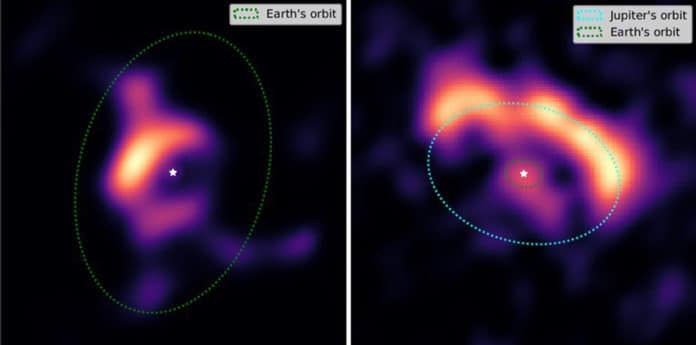Using a technique called infrared interferometry, astronomers have captured 15 images of the inner rims of planet-forming disks located hundreds of light-years away. These disks of dust and gas, similar in shape to a music record, form around young stars.
ESO’s PIONIER instrument was used to combine the collected by four telescopes at the Very Large Telescope observatory to capture the disks in detail. However, this technique does not produce an image of the observed source.
Jean-Philippe Berger of the Université Grenoble-Alpes, who as a principal investigator was in charge of the work with the PIONIER instrument said, “Distinguishing details at the scale of the orbits of rocky planets like Earth or Jupiter (as you can see in the images)—a fraction of the Earth-sun distance—is equivalent to being able to see a human on the Moon or to distinguish a hair at a 10 km distance. Infrared interferometry is becoming routinely used to uncover the tiniest details of astronomical objects. Combining this technique with advanced mathematics finally allows us to turn the results of these observations into images.”
Lead author Jacques Kluska from KU Leuven in Belgium said, “In these pictures, the regions close to the star, where rocky planets form, are covered by only a few pixels. We needed to visualize these details to be able to identify patterns that might betray planet formation and to characterize the properties of the disks. This required a completely different observation technique. I’m thrilled that we now, for the first time, have 15 of these images.”
“You can see that some spots are brighter or less bright, like in the images above: this hints at processes that can lead to planet formation. For example, there could be instabilities in the disk that can lead to vortices where the disk accumulates grains of space dust that can grow and evolve into a planet.”
Further studies are required to identify what might lie behind these irregularities.
Astronomers will also do new observations to get even more detail and to directly witness planet formation in the regions within the disks that lie close to the star.
Journal Reference:
- Jacques Kluska, A family portrait of disk inner rims around Herbig Ae/Be stars: Hunting for warps, rings, self-shadowing, and misalignments in the inner astronomical units. DOI: 10.1051/0004-6361/201833774
